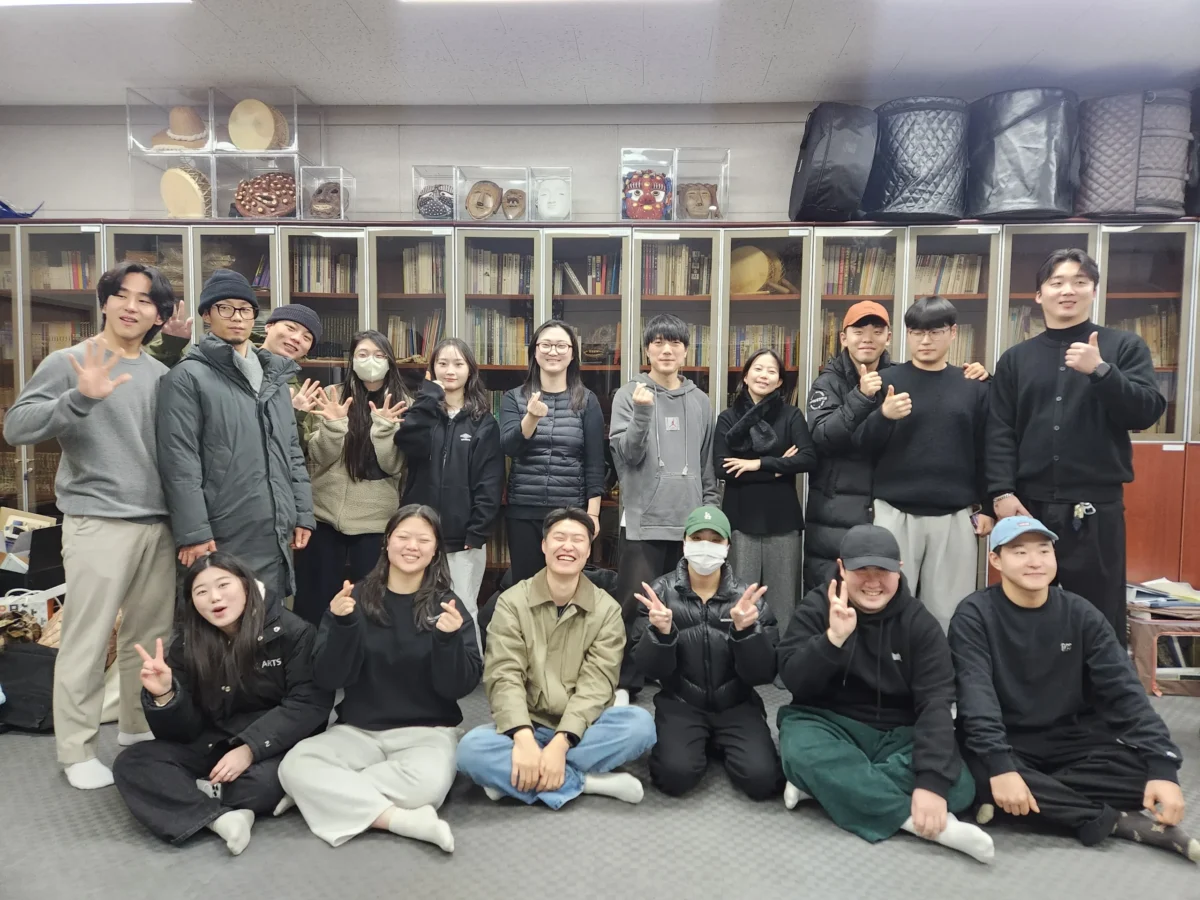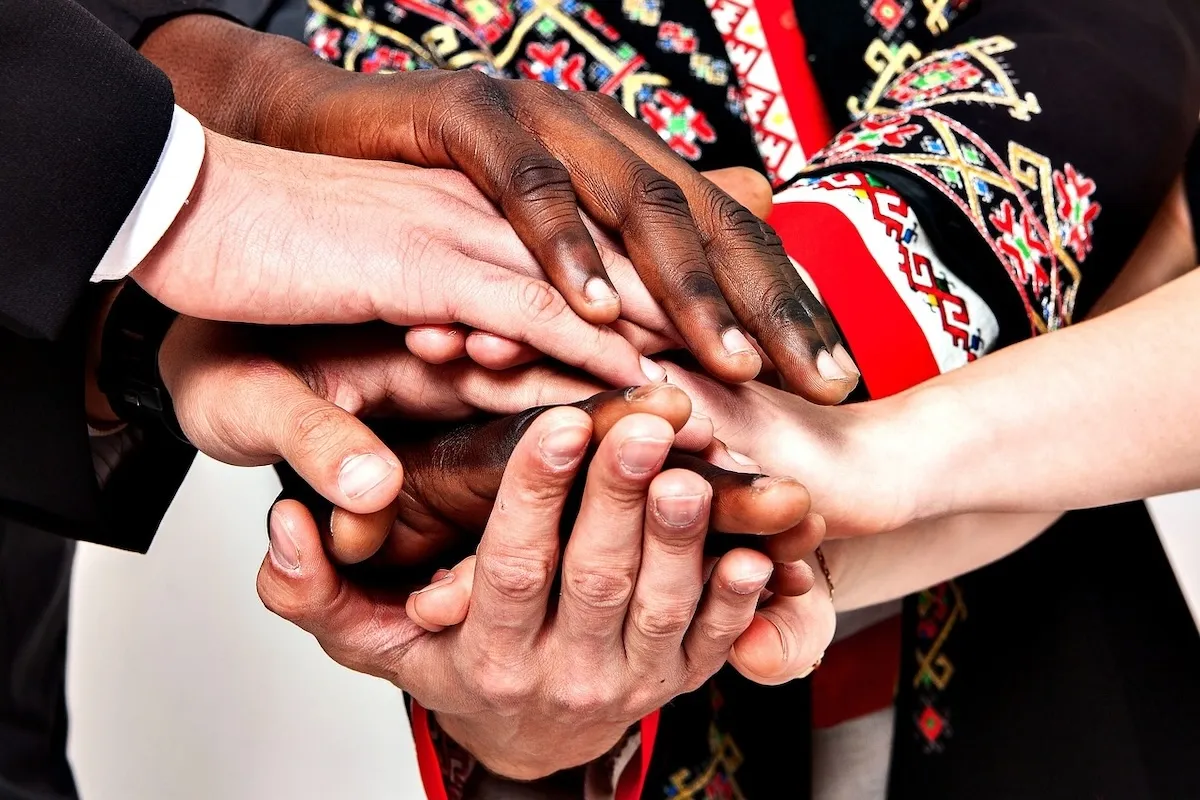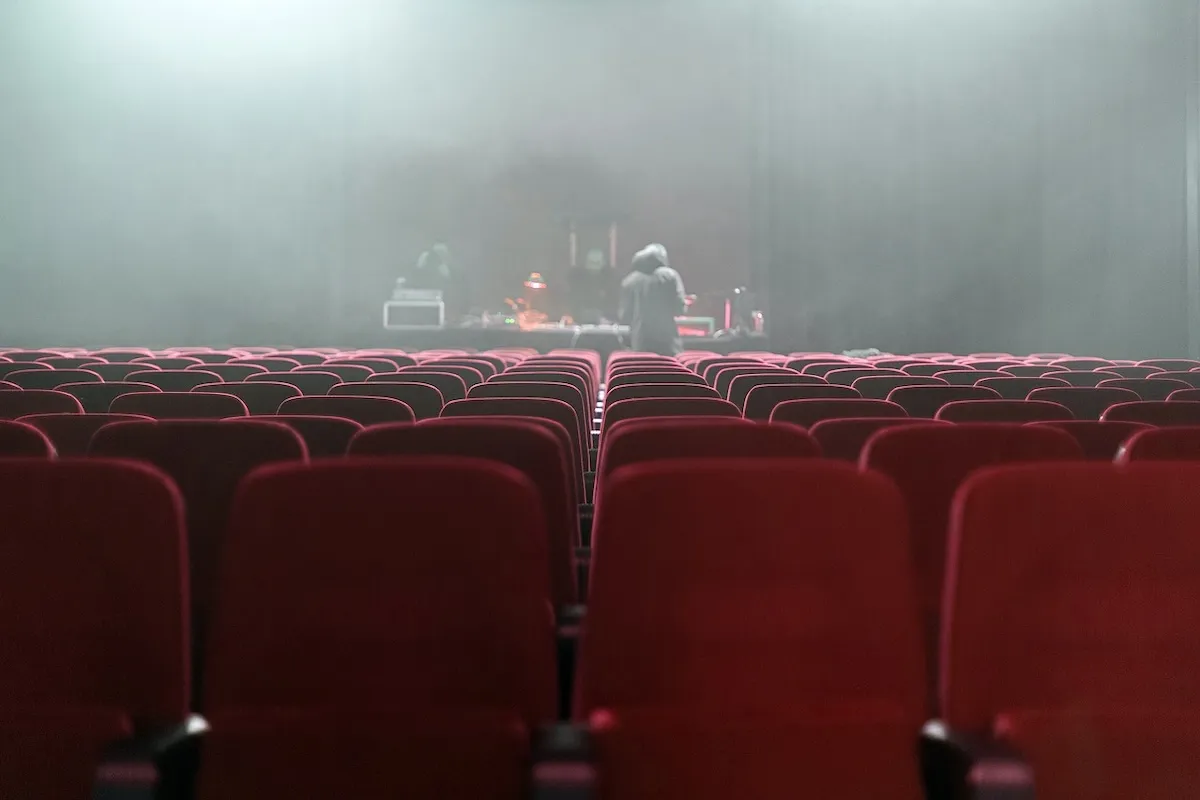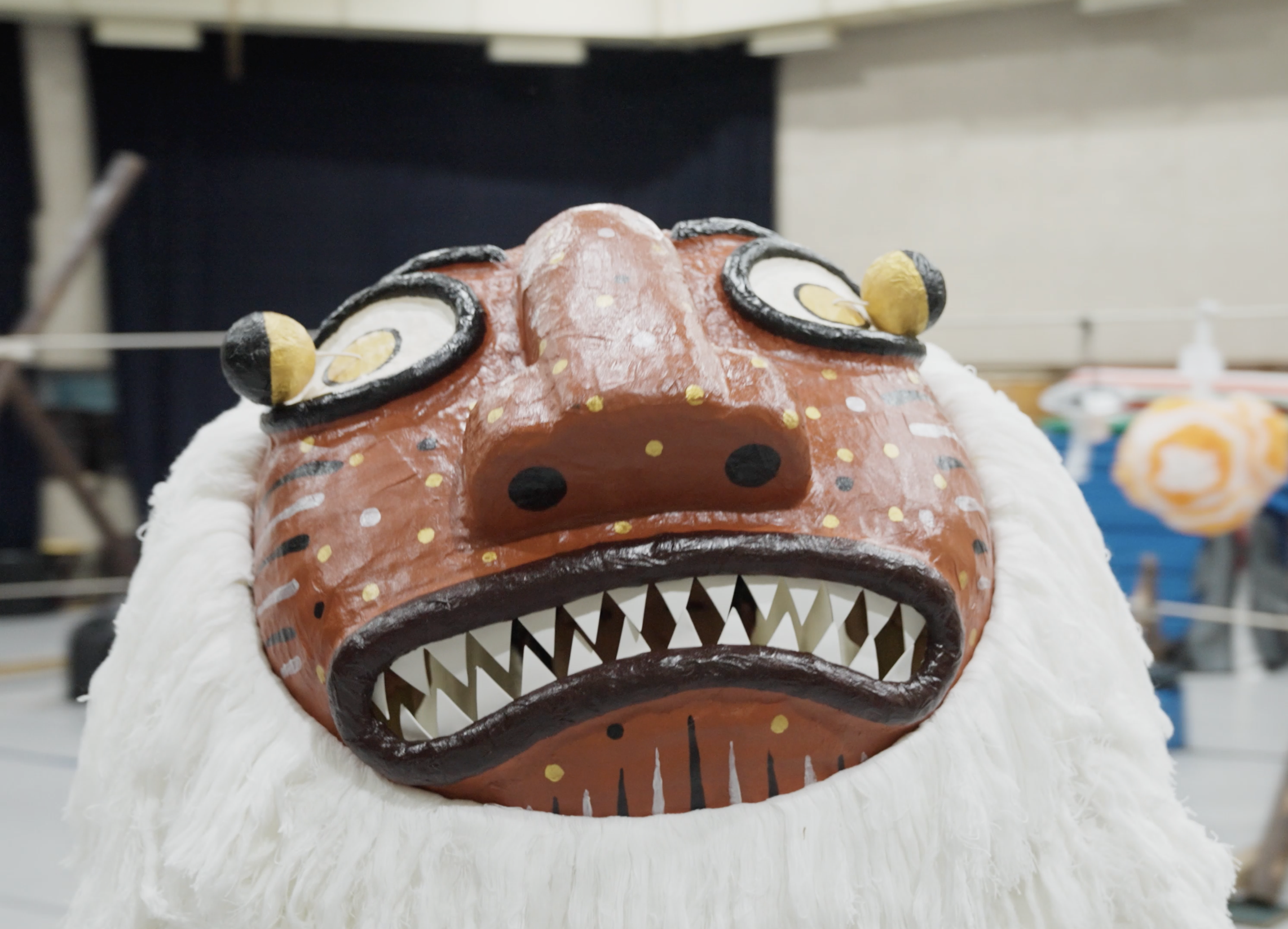| [People]introduces the future direction of art education that the Art Collider Lab (hereinafter referred to as AC Lab) of the Convergence Arts Center seeks and aims to pursue through people who have worked with AC Lab. |
“When people find out you’ve graduated from K-Arts, you’ll get invitations to perform here and there. It feels like, ‘I could make a living from this.’ But by your early 30s, things change. Invitations become rare. That’s when you realize: as an artist, you absolutely need something of your own.”
In-Soo Park(43), a professor of Traditional Arts at Korea National University of Arts’, has a clear message. While it’s important for traditional artists to preserve and pass down Korea’s unique artistic heritage, it’s even more critical to explore, create, and express their own art built on those traditions. Professor Park notes, “Legends like Lee Mae-Bang of Salpuri dance and Kang Seon-Yeoung of Taepyeongmu are revered because of the works they are known for. No matter how beautifully one performs Salpuri or Taepyeongmu, it’s hard to be remembered in the same way they are.” His concerns, as a mentor and fellow artist, are deeply embedded in his teachings. He encourages students’ creativity by praising even their most modest assignments as ‘works’ and emphasizes the importance of intellectual property rights, helping them develop a creator’s mindset.
Last fall, through the Connected Campus Project at K-Arts, Park taught a course titled ‘Practical Skills for Registering and Releasing Original Music Tracks’. The course was a step in the journey of helping students discover their own artistic identities. As students saw their musical ideas develop into final, consumable works, they themselves matured into true artists.

In-Soo Park, Professor of Traditional Arts at Korea National University of Arts
| The Multi-Talented Traditional Artist
In-Soo Park is the epitome of an artist. With a master’s and doctoral degree in Yeonhui(traditional Korean performing arts) from K-Arts, he excels in dancing, singing, and playing instruments. Among these, his specialty is Talchum(traditional mask dance). A certified practitioner of Bongsan Talchum, a National Intangible Cultural Heritage, Park became a professor at K-Arts in his 30s.
“Talchum was first offered as a major in 1998. Compared to Gut(shamanic rituals), and Pungmul(folk percussion), it was developed much later and is still under-researched. But I was drawn to it. Talchum feels like theater, dance, and song all rolled into one—a true composite art form,” he says with a laugh.
While deeply committed to preserving and advancing traditional arts, Park stays true to the essence of being an artist: creation and expression. He believes that learning tradition with humility and dedication is essential but insists it should ultimately serve as a foundation for personal expression.
His 2021 original Talchum performance Suckkeojaebi embodies this philosophy. Unlike traditional Talchum, which often repeats fixed movements, the performance freely alternated between set choreography and improvisation. Park credits BTS as the inspiration. “When I watched BTS perform Dynamite, I saw their individual artistry shine through their spontaneous moves. That improvisation felt like something uniquely theirs. It inspired me to recover the improvisational nature of traditional mask dance and incorporate it into a new Talchum performance.”

Professor Park emphasized, “The essence of an artist is creation and expression.”
Since 2020, Park has also led a project with students to create new Seoljanggu (solo Janggu drum performance) pieces. Recognizing that there are too few compositions for solo Janggu performances, he initiated this project to expand the repertoire. “The pieces my students create are often playful and fun,” Park says. “They’re also easier to perform than traditional compositions, which helps broaden the accessibility of traditional arts.”
| “What You Create is Called ‘Art’ in the World”
Park is captivated by the originality of his students’ compositions. Although their work may not yet demonstrate high-level mastery, it brims with fresh and creative ideas. Unconventional rhythms and imaginative techniques frequently emerge, and there’s a spirit of experimentation, but the students themselves often fail to recognize the value of their work.
“They were surprisingly lukewarm about it,” Park recalls with a smile. “There were so many great pieces that I thought they’d want to perform everywhere, but the works were quickly forgotten. Maybe they felt their skills weren’t ready, or they just weren’t motivated to create more. They didn’t seem to realize how precious their work was.”
Disappointed by the fleeting nature of the students’ efforts, Park suggested producing an album. This led to the Practical Skills for Registering and Releasing Original Music Tracks course, where students recorded their compositions in a studio, build through the Connected Campus Project, registered them as intellectual property, and released them online. The course also included one-on-one mentoring with industry experts, offering an in-depth look at copyright and distribution processes.
The course aimed to achieve two goals. First, it reinforced the message that creating one’s own art is vital. “K-Arts students perform so often during their studies that they can easily get caught up in practices and performances,” Park explains. “I wanted to give them time to reflect, develop the mindset of a true artist, and find motivation for their own creative journeys.”
Second, it addressed the need to expand the repertoire of traditional arts. As Park notes, there are only a handful of compositions for genres like Pungmul and Janggu, making performances feel repetitive and potentially uninspiring. He sees the students’ compositions as a way to diversify and invigorate traditional arts. By celebrating their work as ‘art’, he hopes to foster creativity and expand the reach of traditional music.
“I make sure every piece they compose is notated,” Park says. “I’m compiling these into a Seoljanggu collection, like a folk guitar songbook. The thicker the book gets, the more accessible traditional arts will become—especially for young people. The students’ pieces are easy to play, lively, and fun.”
| Rethinking Art Education: Creating Space for Individuality
As a K-Arts alumnus, Park empathizes with today’s students. He worries that they are losing their individuality amid the school’s demanding curriculum.
“It feels a bit more rigid now compared to when I was a student,” he reflects. “Back then, there was more room to explore. I even dabbled in stage crew work for the School of Film and played minor roles in plays at the School of Drama. Those experiences enriched me as an artist.”
Park advocates for greater flexibility in education, creating opportunities for students to pursue their own interests. This is why he’s cautious about the master-apprentice teaching model often used in the arts. “Its strength is that it allows students to quickly learn what their teachers have spent years mastering,” Park says. “But it can also trap them in existing frameworks, making it harder to develop their own artistic voice.”
He also critiques the dense curriculum, which heavily focuses on traditional repertoires and performances, leaving little room for exploration. “We need to strip the curriculum down to the essentials and create an environment where students can freely choose what to explore and experience. The process of discovering one’s interests is the same as the process of finding one’s artistic identity,” he adds.

Professor Park(right) emphasized, “Art education should be able to encourage artists’ free will.”
Ultimately, Park believes future arts education should focus on establishing principles of creation. Instead of simply teaching traditional works, educators should emphasize the logic and methodology behind their creation, helping students develop their own creative standards.
“It’s like learning harmony while playing Mozart in Western music,” Park explains. “Without understanding the principles of creation, merely mimicking Mozart makes it harder to create something uniquely your own.” Once these principles are established, it becomes easier to fuse traditional arts with other genres or disciplines—an essential skill in today’s era of convergence.
“Now is the age of fusion,” Park concludes. “The demand for cross-disciplinary artistry is also growing. If each individual’s creative standards and methodology are firmly established, it becomes much easier to navigate between genres and fields. Just like how BTS inspired a Talchum performance. Traditional arts still have a long way to go, but with open minds and a willingness to explore, we’ll eventually find what’s uniquely ours.”
/ written by TJ
Related Videos



